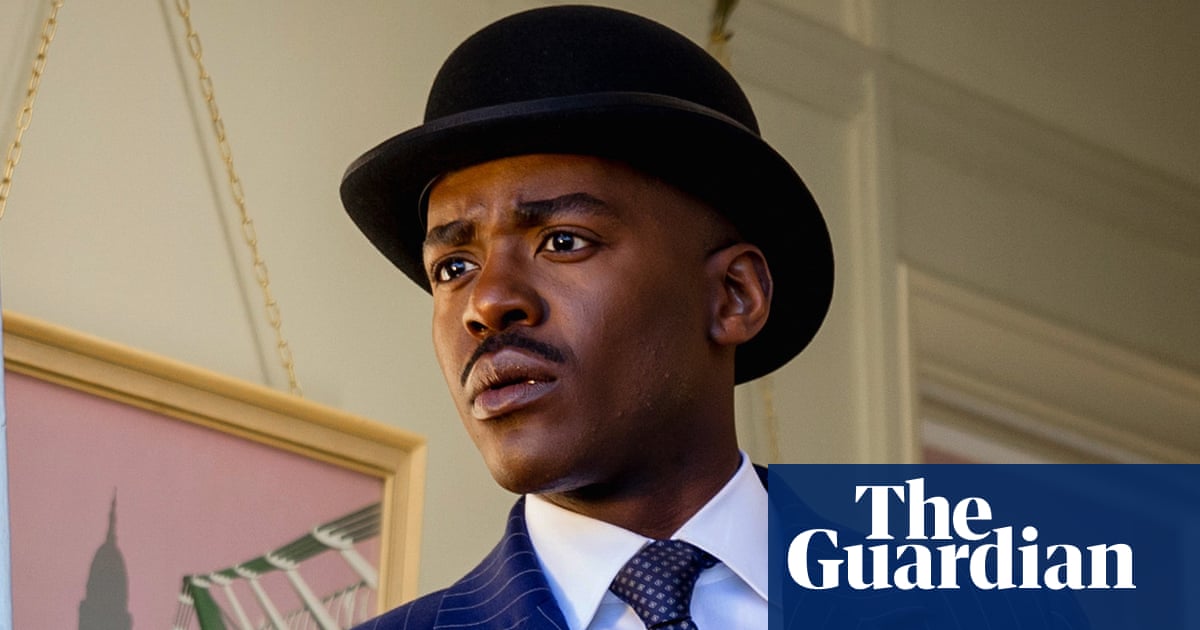In a season full of stories about stories and littered with fourth-wall breaks, this was a Doctor Who episode distilled into a fairytale, with Archie Panjabi delighting in playing up the wicked Rani caricature and Ncuti Gatwa’s Doctor reduced to a passive, then persecuted, bystander.
It was odd seeing the Doctor and Belinda (Varada Sethu) as a contented married couple, WandaVision style, enjoying the kind of boring day-to-day existence that Matt Smith’s Doctor showed inThe Power of Threeis impossible for him to live, without getting restless.
Conrad (Jonah Hauer-King) appeared to be holding the world together and taunting our heroes with his mock CBeebies Bedtime Stories show, but it looked to be taking it out of him. Anita Dobson as Mrs Flood/“a” Rani was good value as ever. Was that a hint of conflict on her face about the whole plan when she was comforting Conrad?
Millie Gibson as Ruby Sunday continued to prove that she is better suited to leading this show through episodes where the Doctor isn’t really being the Doctor than being on board the Tardis itself, although her introduction to the underworld of ignored and dispossessed people with disabilities did slow the pace of the episode.
Then there were Jonathan Groff, Ruth Madeley and Bonnie Langford in the mix too. And a run-through of previous Doctor’s faces that sidestepped where exactly Jo Martin’s Fugitive Doctor fits in by slotting her in between 13 and 14, where we know she definitely doesn’t belong.
The Giggle reared its head, too, this time creepily voiced by the stolen baby. It has been a continued presence this year. Mr Ring-a-Ding did the Stooky Bill giggle, and its waveform appeared about the Harmony arena last week. What can it all mean?
What ifDoctor Whodid WandaVision, but with added giant bone dinosaurs?
This was more about life aboard the redressed Unit set, which also housed much of the action in last year’s two-part finale. It was reassuring to see that in whatever timeline we are in Col Ibrahim (Alexander Devrient) has the hots for his boss, Kate Lethbridge-Stewart (Jemma Redgrave). We will see more of that pair in forthcoming spin-off The War Between the Land and the Sea.
Much as he did in 2008’s Turn Left and in his dramaYears and Years, Russell T Davies explored here a vision of contemporary Britain that had turned more authoritarian. The script may have focused on “doubt” being the thought crimes committed, but it was clear that Davies was drawing parallels with regimes where you can be dragged out of your home and disappeared for being gay, for being political, for being different, for your family being suspicious of you. It was more chilling than any of the science fiction in the episode, and a timely warning.
It is hard to know where to begin. Everything was a mystery, in an episode that was nearly all set-up and no payoff. We don’t know what the bone monsters are. We don’t know where Belinda has disappeared to. We don’t know why Poppy is there.
More than anything, we don’t know why they billed this era as a soft reboot where people could jump on with the aim of attracting a new younger audience, and then crammed it full of things that first appeared in episodes in the 1970s and 80s and have barely been referenced since. Baffling. Fun at times, but baffling.
We first encountered the Doctor’s alias of John Smith in Patrick Troughton’s 1968 adventureThe Wheel in Space.
Omega, a Gallifreyan solar engineer, made his debut in the 10th anniversary rompThe Three Doctors, and cropped up again 10 years later during the Peter Davison era in 1983’sArc of Infinity.
The Gallifreyan Seal, sometimes known as the Seal of Rassilon, first appeared on Gallifrey during 1976 Tom Baker storyThe Deadly Assassin. However, the prop was recycled by designer Roger Murray-Leach, having previously been seen in 1975’sRevenge of the Cybermenas an emblem of the Vogans. They are not to be confused with the Vogons and their terrible poetry in The Hitchhiker’s Guide to the Galaxy.
Turning people into animals may be a fairytale trope, but the first transformation Frau Rani caused in Bavaria, turning the mother into violets, echoed her tactics in 1985’sThe Mark of the Rani. Kate O’Mara’s incarnation of the Time Lady had landmines that turned people into trees when they stood on them.
Dugga Doo, from last week’s Interstellar Song Contest, has become such a cult hit that the BBC has produced a full-length version of the song without the dialogue over the top of it, and on Wednesday launched a 24/7 YouTube livestream with the earworm on a constant loop.
It’s the season finale. The BBC has said there will be no previews for journalists, and no early morning iPlayer drop, so everybody gets to watch The Reality War at exactly the same time on BBC One, iPlayer, Disney+ internationally, andin cinemas in the UK.
